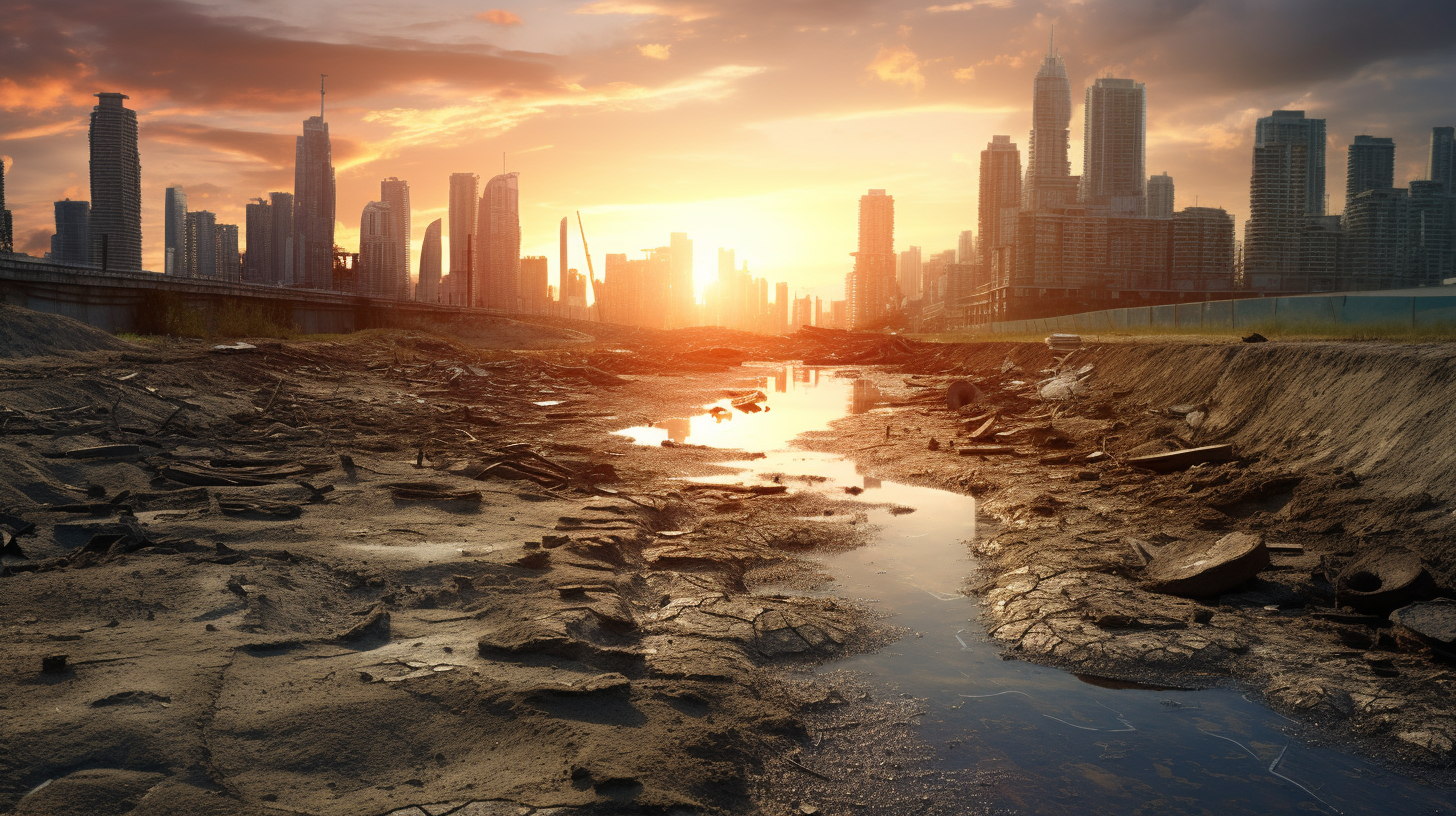In the throes of a torrid dystopia, our metropolises loom as man-made volcanoes, spewing not lava, but an oppressive heatwave that clutches at the breath of those who walk their pavement. The urban heat island effect, a term once relegated to the footnotes of environmental discourse, has become a defining character of our existence, a formidable foe in a world already on a precipice.
Alas, our cities, with their concrete jungles and asphalt arteries, have become cauldrons simmering in the sun. The dark surfaces absorb and radiate heat, unlike the dissipating grasslands they’ve supplanted, elevating temperatures to levels that transform bustling city life into a perilous endeavor. The once revered modern structures now serve as sinister monuments to our environmental indifference.
The problem runs deeper than mere discomfort. Energy demands skyrocket, plunging our already strained power grids into a maelstrom of breakdowns. Blackouts ensue, throwing the vulnerable into a state of life-threatening jeopardy. ‘Survival of the fittest’ ceases to be a mere cliché, morphing into a stark urban manifesto.
But how did we reach this boiling point? The answer is multi-faceted, yet at its core, it lays bare our collective hubris. A cocktail of unbridled urban expansion, rampant deforestation, and deceitful industrial practices has stripped the earth of its natural cooling mechanisms. The vegetation that once softened the sun’s impact has bowed to the axe and saw, leaving behind only the hollow promise of growth and progress.
Moreover, our endeavors have inadvertently created architectural traps – narrow streets framed by skyscrapers act as thermal corridors, funneling the heat into concentrated zones where the wind dares not venture. These sectors simmer unchecked, a silent testament to the shortsighted craft of human design. In these manmade canyons of warmth, the air stirs with a lethargy, a defeated whisper echoing off concrete walls that long to breathe.
And as we muster the courage to glance skyward, we witness the sickly shroud that looms—a canopy of pollution that traps heat with a fierce resolve, a blanket woven from the threads of our own emissions. A vile inversion gripped by the hand of human folly, rendered more potent by the absence of green havens. The shade of trees, once our loyal guardians, now a distant memory amidst the glinting glass and steel.
Let us not be duped by the ephemeral night, for it offers little respite. The absorbed heat of the day lingers within the urban skeleton, a smoldering reminder that darkness no longer brings solace, but rather, a continuation of the day’s scorn.
In these barren deserts of our own making, humanity stands withered, etching out existence. Heat-related afflictions are no longer rarities but expected companions, with our medical establishments overrun and under-equipped to stanch the tide.
The malignancy of this scourge lies not just in its presence but in our indifference to its march. We were forewarned, alerted to the burgeoning crisis by climatologists and activists alike, yet we chose to shroud ourselves in denial until the oppressiveness of reality could no longer be ignored.
In the end, our heat islands are not merely a geographical anomaly but a stark reflection of our cultural myopia—a world set ablaze by the very hands supposed to protect it. And as we stand amidst the cinders of what was once fresh and green, we are left to wonder, what if?
